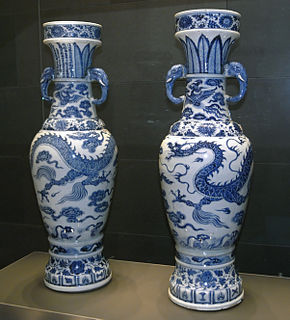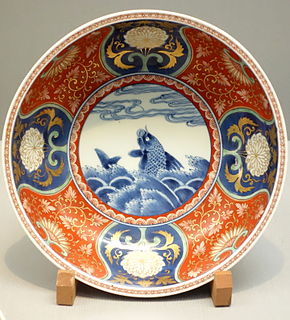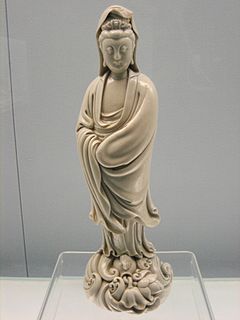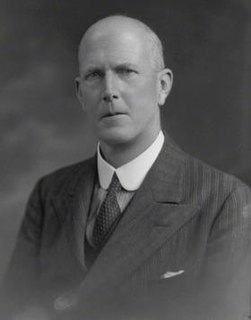History
The Society was founded in London in 1921 by a group of collectors and others interested in oriental ceramics. [3] Since then, many notable art historians and collectors have joined the OCS, have given lectures to the Society and have written articles for publication in the annual Transactions of the Oriental Ceramic Society (TOCS, currently edited by Dr Stacey Pierson). [4] The Transactions [5] are a highly regarded journal on Asian art, and the annual Newsletter [6] brings news on Asian art from around the world. Through lectures, handling sessions, exhibitions and publications, the Society has provided an influential forum in which its members have developed and exchanged their knowledge with experts and academics.
In the 1950s and ‘60s a regular exhibition programme was organised, which consecutively covered the arts of the major Chinese dynasties, Tang (618–907), Song (960–1279), Ming (1368–1644) and Qing (1644–1911), but also highlighted special topics such as the various Song dynasty ceramics, and blue-and-white, monochrome and polychrome wares from the Ming and Qing. These exhibitions were mounted at the Arts Council Gallery in St. James, London. The Silver Jubilee of the Society in 1971 saw a major exhibition on The Ceramic Art of China held at the Victoria and Albert Museum, London. [7]
In 2021 the Society held an exhibition [8] curated by Sarah Wong to mark 100 years since its foundation.

Porcelain is a ceramic material made by heating substances, generally including materials such as kaolinite, in a kiln to temperatures between 1,200 and 1,400 °C. The strength, and translucence of porcelain, relative to other types of pottery, arises mainly from vitrification and formation of the mineral mullite within the body at these high temperatures. Though definitions vary, porcelain can be divided into three main categories: hard-paste, soft-paste and bone china. The category that an object belongs to depends on the composition of the paste used to make the body of the porcelain object and the firing conditions.

Pottery and porcelain, is one of the oldest Japanese crafts and art forms, dating back to the Neolithic period. Kilns have produced earthenware, pottery, stoneware, glazed pottery, glazed stoneware, porcelain, and blue-and-white ware. Japan has an exceptionally long and successful history of ceramic production. Earthenwares were created as early as the Jōmon period, giving Japan one of the oldest ceramic traditions in the world. Japan is further distinguished by the unusual esteem that ceramics holds within its artistic tradition, owing to the enduring popularity of the tea ceremony.

Celadon is a term for pottery denoting both wares glazed in the jade green celadon color, also known as greenware or "green ware" ), and a type of transparent glaze, often with small cracks, that was first used on greenware, but later used on other porcelains. Celadon originated in China, though the term is purely European, and notable kilns such as the Longquan kiln in Zhejiang province are renowned for their celadon glazes. Celadon production later spread to other parts of East Asia, such as Japan and Korea as well as Southeast Asian countries such as Thailand. Eventually, European potteries produced some pieces, but it was never a major element there. Finer pieces are in porcelain, but both the color and the glaze can be produced in stoneware and earthenware. Most of the earlier Longquan celadon is on the border of stoneware and porcelain, meeting the Chinese but not the European definitions of porcelain.

The Percival David Foundation of Chinese Art holds a collection of Chinese ceramics and related items assembled by Percival David that are on permanent display in a dedicated gallery in Room 95 at the British Museum. The Foundation's main purpose is to promote the study and teaching of Chinese art and culture. The collection consists of some 1,700 pieces, mostly of Song, Yuan, Ming and Qing dynasty porcelain from the 10th century to the 18th. It includes a painting, Scroll of Antiquities.

Imari ware is a Western term for a brightly-coloured style of Arita ware Japanese export porcelain made in the area of Arita, in the former Hizen Province, northwestern Kyūshū. They were exported to Europe in large quantities, especially between the second half of the 17th century and the first half of the 18th century.

Korean ceramic history begins with the oldest earthenware from around 8000 BC. Throughout the history, the Korean peninsula has been home to lively, innovative, and sophisticated art making. Long period of stability have allowed for the establishment of spiritual traditions, and artisan technologies specific to the region. Korean ceramics in Neolithic period have a unique geometric patterns of sunshine, or it's decorated with twists. In Southern part of Korea, Mumun pottery were popular. Mumun togi used specific minerals to make colors of red and black. Korean pottery developed a distinct style of its own, with its own shapes, such as the moon jar or Buncheong sagi which is a new form between earthenware and porcelain, white clay inlay celadon of Goryeo, and later styles like minimalism that represents Korean Joseon philosophers' idea. A lot of talented Korean potters were captured to Japan after the porcelain war in 1592–1598. Arita ware, founded by Yi Sam-pyeong opened a new era of porcelain in Japan. Another Japanese representative porcelain, Satsuma ware was also founded by Dang-gil Shim and Pyeong-ui Park. 14th generation of Su-kwan Shim have been using the same name to his grandfather and father to honor they are originally Korean, 14th Su-kwan Shim is honorable citizen of Namwon, Korea.

Kakiemon is a style of Japanese porcelain, with overglaze decoration called "enameled" ceramics. It was originally produced at the factories around Arita, in Japan's Hizen province from the Edo period's mid-17th century onwards. The style shares much in common with the Chinese "Famille Verte" style. The quality of its decoration was highly prized in the West and widely imitated by major European porcelain manufacturers during the Rococo period.

"Blue and white pottery" covers a wide range of white pottery and porcelain decorated under the glaze with a blue pigment, generally cobalt oxide. The decoration is commonly applied by hand, originally by brush painting, but nowadays by stencilling or by transfer-printing, though other methods of application have also been used. The cobalt pigment is one of the very few that can withstand the highest firing temperatures that are required, in particular for porcelain, which partly accounts for its long-lasting popularity. Historically, many other colours required overglaze decoration and then a second firing at a lower temperature to fix that.

Chinese ceramics show a continuous development since pre-dynastic times and are one of the most significant forms of Chinese art and ceramics globally. The first pottery was made during the Palaeolithic era. Chinese ceramics range from construction materials such as bricks and tiles, to hand-built pottery vessels fired in bonfires or kilns, to the sophisticated Chinese porcelain wares made for the imperial court and for export. Porcelain was a Chinese invention and is so identified with China that it is still called "china" in everyday English usage.

Sir Percival Victor David Ezekiel David, 2nd Baronet was a Bombay-born British financier who is best known as a scholar and collector of Chinese ceramics. He also formed a collection of Chinese stamps and postal history that has been evaluated as one of the greatest ever assembled.

Dehua porcelain, more traditionally known in the West as Blanc de Chine, is a type of white Chinese porcelain, made at Dehua in the Fujian province. It has been produced from the Ming dynasty (1368–1644) to the present day. Large quantities arrived in Europe as Chinese export porcelain in the early 18th century and it was copied at Meissen and elsewhere. It was also exported to Japan in large quantities. In 2021, the kilns of Dehua were inscribed on the UNESCO World Heritage List along with many other sites near Quanzhou for their importance for medieval maritime trade and the exchange of cultures and ideas around the world.
Roger Soame Jenyns, who usually wrote his name simply as Soame Jenyns was a British art historian, known as an expert on East Asian ceramics.

Seto ware is a type of Japanese pottery, stoneware, and ceramics produced in and around the city of Seto in Aichi Prefecture, Japan. The Japanese term for it, setomono, is also used as a generic term for all pottery. Seto was the location of one of the Six Ancient Kilns of Japan.

Ru ware, Ju ware, or "Ru official ware" is a famous and extremely rare type of Chinese pottery from the Song dynasty, produced for the imperial court for a brief period around 1100. Fewer than 100 complete pieces survive, though there are later imitations which do not entirely match the originals. Most have a distinctive pale "duck-egg" blue glaze, "like the blue of the sky in a clearing amongst the clouds after rain" according to a medieval connoisseur, and are otherwise undecorated, though their colours vary and reach into a celadon green. The shapes include dishes, probably used as brush-washers, cups, wine bottles, small vases, and censers and incense-burners. They can be considered as a particular form of celadon wares.

Alfred Clark was a British-American pioneer of music recording and cinema. As a cameraman and director of productions at Edison's first studio, he was the first to make moving pictures with innovations like continuity, plot, trained actors and special effects. In 1896, he joined Emile Berliner's Gramophone Company and then went to Europe where he became an important manager of companies like HMV and EMI. He was naturalized as a British citizen in 1928 and he became a leading member of the Oriental Ceramic Society in London, establishing a valuable collection including rare pieces which had been made for the emperors of the Tang and Song dynasty.

Rose Kerr is an English art historian specializing in Chinese art, especially Chinese ceramics, on which she has written a number of books. She was the Keeper of the Far Eastern Department at the Victoria & Albert Museum in London until 2003. In 2015, she was made an honorary citizen of Jingdezhen, China, the historic centre of Chinese porcelain production, in recognition of her academic research on Jingdezhen ceramics, and her promotion of cultural exchange between the United Kingdom and China. She was the first non-Chinese citizen to be so honoured.

Robert Lockhart Hobson CB was a British civil servant and antiquarian. He was keeper of the Department of Ceramics and Ethnography at the British Museum and an authority on Far Eastern ceramics. He was noted for his cataloguing which The Times described as establishing firm facts for what had previously been "surmise and unproved tradition" and he was highly influential through his writing in the elevation of Chinese ceramics from craft works to the status of objects of fine art. He was president of the Oriental Ceramic Society from 1939 to 1942.

A Chicken Cup is a bowl-shaped vessel made of Chinese porcelain painted in the doucai technique. Chicken cups were created during the Ming dynasty, during the Chenghua Emperor's reign in China, and originally functioned as a vessel to drink wine from. Chenghua Chicken Cups were created in an imperial kiln in the Jingdezhen porcelain factory, in Southern China. The Emperor Chenghua had the Chicken Cup created in the 15th century as an act of devotion for his empress mother who was recorded to have an appreciation for small objects and valued a simple design taste.
The Southeast Asian Ceramic Society (SEACS) was founded in 1969 in Singapore.

John Anthony Miller OBE SBS JP is a former Hong Kong government official and civil servant, author, art collector and historian specializing in Chinese porcelain.


















